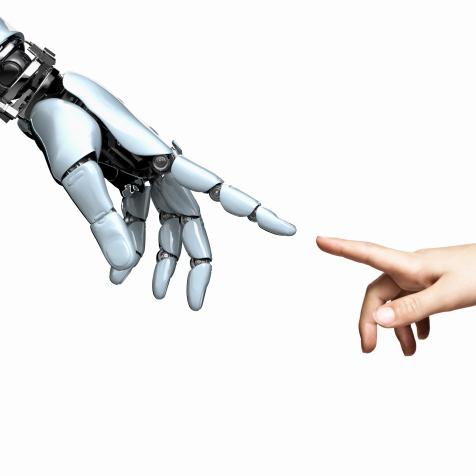
Soft Robots Ape Nature to Operate in the Harshest Conditions
You could be forgiven for assuming that soft robotics is simply about making robots without rough edges – a kind of warm, fuzzy android experience. If machines that hug humans are the aim, then that’s probably true, but soft robots are often designed to operate in harsh or dangerous environments where others would struggle.
Cornell University’s low-cost, inflatable safety robots are soft to the touch, but they are hard-wired to help save people in emergency situations. Cameras under their nylon skin identify hand contact while they guide you to safety. Soft in this sense, definitely does not mean fluffy: it means perceptive and purposeful.
Meanwhile, research into sub-sea exploration robots is using bendy fish and sea star designs to see how they perform underwater. The aim is to master movement in a dynamic, flowing environment, but also to see how changing shape like the sea star allows a robot to grip onto rock and work more effectively in strong currents.
Some of the most extreme conditions on Earth are found in the deep sea and on the ocean floor, where submersible craft experience crushing pressures on their moving parts. So Chinese researchers have built a soft, polymer, self-powered flying fish to operate at maximum depth.
The team constructed a body that replicates the deep-sea snailfish using synthetic muscles powered by a small electrical current. Free-swimming tests at depths of more than 3,200 m (10,500 ft) proved the robot could move effectively before they tested their design in the world’s deepest sea canyon.
Soft fish robot successfully flapped its wings while tethered to a deep-sea lander in the Mariana Trench, 10,900 m (36,000 ft) below the surface. This proves that a fleet of cheap, flexible, soft robots could be used to explore and map the deepest ocean in future, once designs are perfected.
Duke University engineers have imitated an entirely different species for their water-based robot–dragonflies. Their winged creature is made from hydrogel that skims across the water’s surface, picking up changes in acidity or oil spills. DraBot changes shape and moves according to what it encounters, and it could lead to long-range autonomous environmental sensors that provide data about pollution.
Nature provides inspiration for many of these projects, and Colorado State University’s tiny shape-changing robots are no exception. Head of the robotic laboratory, Jianguo Zhao, has copied various creatures to make robots that fly and perch like insects, or swim like frogs.
Small and lightweight robots that change shape to perform specific tasks is the end goal. Zhao envisions using wirelessly controlled robots in military operations, environmental roles, and search-and-rescue situations. His robots would transform to avoid obstacles, or crawl, walk and fly through disaster zones to save lives.
Advanced materials could give soft robots the ability to heal themselves when damaged and continue working. Hybrid, liquid-like conducting materials would also allow engineers to build stretchy electronic circuits for changing shape. And flexible new materials with in-built circuits could be quickly 3D printed for robots with bendy bone, ligament, and tendon structures.
Finally, size won't matter because functionality will be more important. Pocket-sized, stretchable 'ElectroSkin' robots built by the University of Bristol reach and twist into tiny spaces, crawling like caterpillars across surfaces to find their target.
“ElectroSkin is an important step toward soft robots that can be easily transported, deployed and even worn,” said Lead Engineer Jonathan Rossiter. “The combination of electrical, artificial muscles and electrical gripping replicated the movements of animals like slugs and snails, and where they can go, so could our robots.”


















